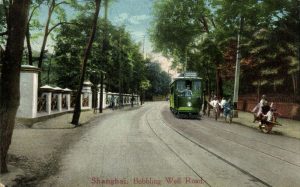
I have often heard or read that in Old Shanghai, the business district was in the International Settlement, and the higher class residential in the calmer streets of the French Concession. Although most of it has now disappeared, the International Settlement although had its select residential district. Bubbling Well (today Nanjing Xi lu), was originally a countryside road with large mansion along with their massive gardens on its side, including the former Majestic Hotel. In the 1920s and 1930s, these large properties were sold and new buildings were erected in a much denser fashion. The residential streets moved up North, along Avenue Road (today Beijing Xi Lu). Although this part of Jing An has been massively built over in the last 20 or 30 years, a few villas have resisted in this area, they include the Laszlo Hudec Hu Mansion (the Green house), the former Pei Mansion and a few houses around the corner of today Changde Lu and Beijing Xi Lu.
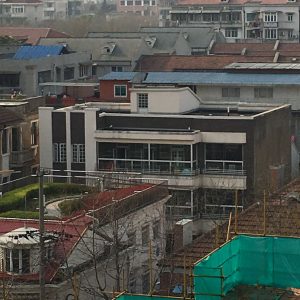
Another street further North with a number of large villas was the Western section of Wuding Lu, although very little information available about them. Large houses seem only to have been in that section of the street as opposed to the (now gone) shikumen and factories that lined the more Eastern section. This stretch of a few hundred meters really feels like other residential streets in the French Concession or around Yu Yuan Lu, making it a pleasant stroll. Although each house is a different style, they all seem to have been built in the 1930s. From a neighboring rooftop, I could see them all and noticed one in particular, an Art Deco mansion, behind a modern school building. Although I could only see part of it, I always thought this house was special.
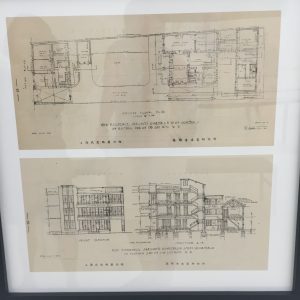 It’s only a few years later, while visiting the Ordinary Metropolis exhibition in 2016, that I discovered the true identity of this house, in a section dedicated to Chinese modernist architects. One of them was American architect Chinese Poy Gum Lee / 李锦沛 (see in-depth article about him on Shanghai Art Deco blog). He worked, among others, on the Chinese YMCA building in Shanghai (today Marcopolo Hotel on people square), on Sun-Yat-Sen memorial in Nanjing and later on buildings in New York’s China Town. I first heard about him during 2015 Shanghai Art Deco World Congress. Blue prints of a house designed by him were used as an example of Chinese modern design in the exhibition.
It’s only a few years later, while visiting the Ordinary Metropolis exhibition in 2016, that I discovered the true identity of this house, in a section dedicated to Chinese modernist architects. One of them was American architect Chinese Poy Gum Lee / 李锦沛 (see in-depth article about him on Shanghai Art Deco blog). He worked, among others, on the Chinese YMCA building in Shanghai (today Marcopolo Hotel on people square), on Sun-Yat-Sen memorial in Nanjing and later on buildings in New York’s China Town. I first heard about him during 2015 Shanghai Art Deco World Congress. Blue prints of a house designed by him were used as an example of Chinese modern design in the exhibition.
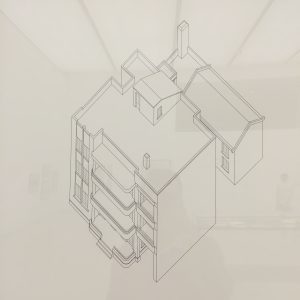
I thought the design looked familiar, but did not really knew from where until seeing the rendering. The Yan Mansion designed by Poy Gum Lee and built in 1934, is actually the house I saw from the rooftop. This was further confirmed by an old picture, although original balconies have been glassed over and the ornamental doors and windows are long gone. Lastly, a map of the location was provided showing it located on “Wuting Road”, today’s Wuding lu.
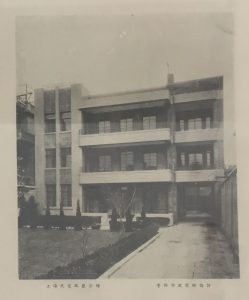
Although there is no historic plate on the building, it is without a doubt, the Yan Mansion designed by Poy Gum Lee, located on today’s 932 Wuding lu. Unfortunately, most of the garden has been eaten by a new building masking it from the street. Being a school also makes it off limits for most people. Funny enough, the exhibition showed its blue print but did not show any current picture, nor mentioned that the building still stands. Hopefully, one day it will be recognized and protected. In the meantime, its current use should keep it standing for long.
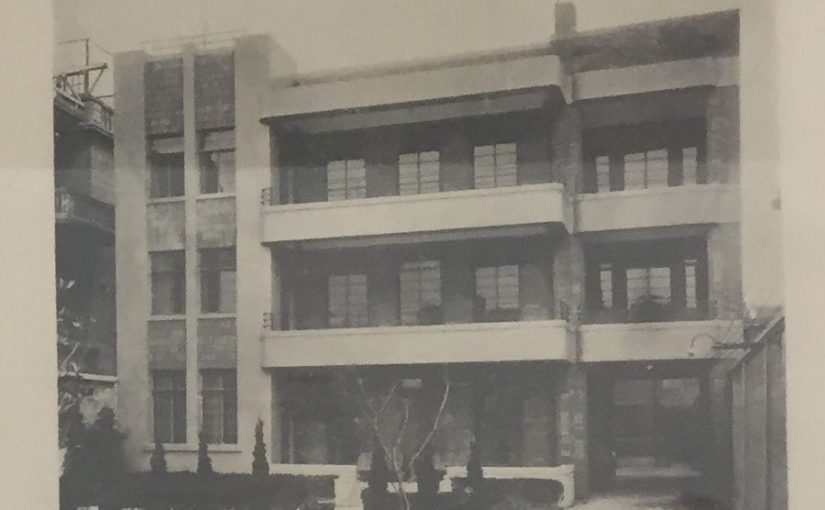
This is litteraly a hidden gem, and well hidden. Not surprising that the organizers of ordinary metropolis exhibition did not mention it was still standing there: they probably did not even know…
Thank you for solving this mystery that we have given up. For years, we thought it was demolished although we had no evidence, so we walked up and down the street many times and didn’t find a trace of the building. It’s great news and I have informed Poy’s family and told them to visit this very page.
I visited Shanghai last December for one week and was fascinated by the architectural legacy from the 1920’s and 1930’s.
The building boom from that time reminds me of Dubai at the moment.
My particular interest was to retrace the footsteps of my grandfather and granduncle who lived there from 1905 to 1922 and served in the Shanghai Municipal Police. Their names were John and Con Hamilton. My grandfather John returned to Ireland in 1922, but my uncle was killed in an incident on Yates Road (Shimen Road No 1) in October 1917.
My question relates to Hamilton House on the junction of Foochow Road and Szechuan Road, built between 1931 to 1933 by Palmer & Turner for Sir Victor Sassoon. What was the origin of the name Hamilton in this instance. I want to clarify if it has any connection to my granduncle.
Any help would be appreciated
Thank you for giving my family and me a priceless gift—finding one of my father’s designs. We are so glad you remembered seeing the plans and connecting it with the Yan Mansion– wonderful background information. We are grateful to you.
Dear Elizabeth,
Thank you for your kind letter. I am glad I could be of help.
Regards from Shanghai
Hi from Washington!
Busy working on a book now (to be launched at the Lit Fest next March, IF I can finish it in time).
Btw, I assume when people ask you (as they do me — still) about people in the Police Dept. you refer them to Robert Bickers at Bristol U? I always do and he almost always answers them.
A miracle — as we are all so busy, nu? Keep up the good work,
As Always, Tess
There is another famous Hamilton – Rowland Hamilton who served as chairman of the SMC from 1860-61. Most likely it was named after him…